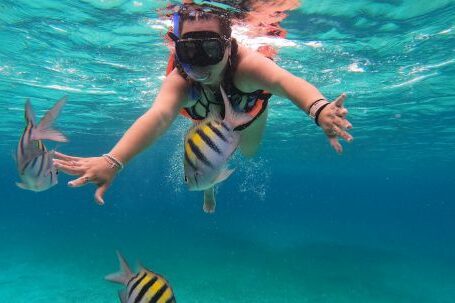Diving with a buddy is an essential aspect of scuba diving. Having a dive buddy not only enhances the overall experience but also ensures safety underwater. Whether you are a beginner or an experienced diver, it is crucial to follow certain guidelines and communicate effectively with your dive buddy. In this article, we will discuss some important tips on how to dive with a buddy to ensure a successful and enjoyable diving experience.
Establishing Trust and Communication
Before embarking on any diving adventure, it is vital to establish trust and effective communication with your dive buddy. Discuss your experience level, diving objectives, and any concerns you may have. It is essential to be honest about your abilities and limitations to ensure a safe diving experience for both you and your buddy.
Plan the Dive Together
Planning the dive together is an important step in diving with a buddy. Discuss the dive site, entry and exit points, maximum depth, and dive time. It is crucial to have a clear understanding of the dive plan to avoid any confusion underwater. Make sure to discuss hand signals and agree on a pre-dive routine to ensure a smooth and coordinated dive.
Maintain Visual Contact
Maintaining visual contact with your dive buddy is crucial while diving. Always keep an eye on your buddy and ensure they are within your sight. This will not only help you stay connected but also enable you to assist each other if needed. In case you lose sight of your buddy, ascend slowly and wait at the agreed-upon meeting point.
Buddy Check
Performing a buddy check before entering the water is essential for a safe dive. This involves checking each other’s equipment, ensuring the proper functioning of all gear, and verifying that you both have the necessary equipment for the dive. Additionally, make sure to agree on the hand signals you will use during the dive.
Maintain Proper Buoyancy
Proper buoyancy control is essential while diving with a buddy. It helps prevent accidental contact with the reef or other marine life. Ensure you and your buddy are both able to maintain neutral buoyancy throughout the dive. This will not only protect the environment but also make your dive more enjoyable.
Communicate Underwater
Effective communication is key to a successful dive with a buddy. Make sure to establish and use hand signals to communicate underwater. These signals can convey important messages such as “okay,” “stop,” “go up,” or “problem.” Practice using these signals before the dive to ensure you both understand each other.
Stay Close but Avoid Overcrowding
While it is important to stay close to your buddy, it is equally important to avoid overcrowding. Give each other enough space to move comfortably and explore the underwater world. Maintaining a reasonable distance will help prevent accidental contact and ensure a more relaxed and enjoyable dive.
Emergency Procedures
Being prepared for emergencies is crucial when diving with a buddy. Discuss the emergency procedures before the dive, including how to assist each other in case of air supply problems, entanglement, or other emergencies. Knowing these procedures and practicing them regularly will help you respond effectively in case of an emergency.
In conclusion, diving with a buddy is an essential aspect of scuba diving. By establishing trust, communicating effectively, planning the dive together, maintaining visual contact, performing buddy checks, and following proper buoyancy control and communication techniques, you can ensure a safe and enjoyable diving experience. Remember to always prioritize safety and be a responsible dive buddy to enhance the overall diving experience for everyone involved.





